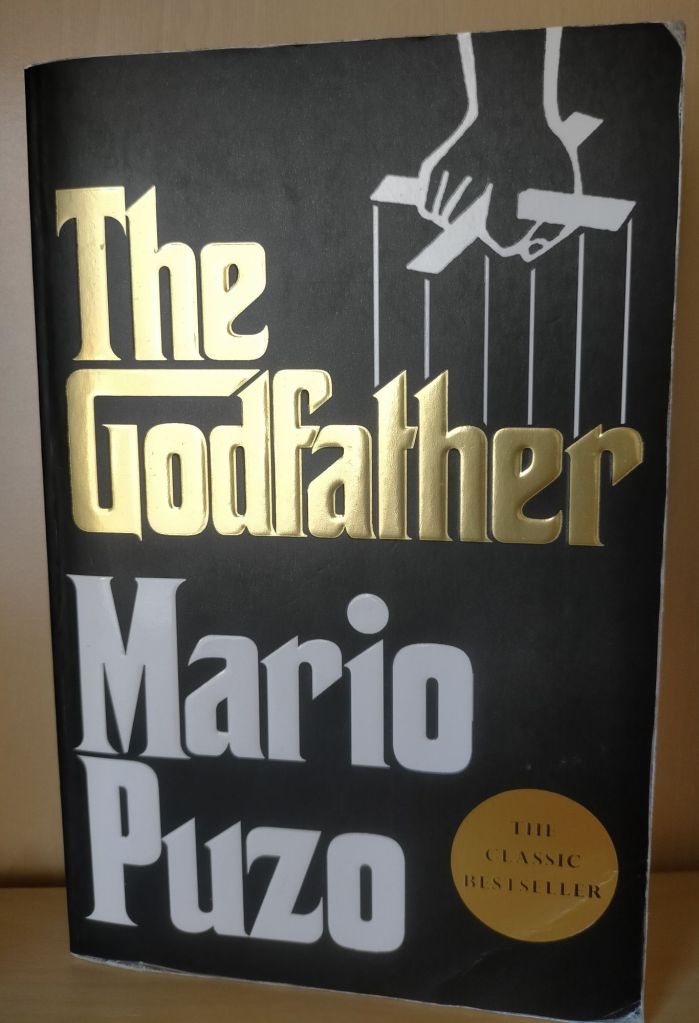‘A friend should always underestimate your virtues and an enemy overestimate your faults.’
Mario Puzo
“I came here today because I heard Don Corleone is an honorable man”.

Ah, yes, The Godfather. One of the greatest Hollywood films ever created, with a superstar cast including Marlon Brando, Al Pacino, James Caan, Robert Duvall, Richard Castellano, Diane Keaton… and forever changed American cinema, society and culture with its themes of blackmail, murder and family values…
Oh wait. Thats the 1972 film directed by Francis Ford Coppola, and not the book…
Yes, dear readers, today we examine Mario Puzo’s original crime thriller from 1969, which recounts the story of the Corleone family, and its position in the American Mafia in New York during the 1940s and 50s. Most audiences will have seen the 1972 film, so I will be not only reviewing the original novel but also comparing book to film to see where the key differences lie. Needless to say, some spoilers will follow.
The major difference between book and film is the great amount of development and story arcs of the characters, particularly several minor characters in the film. Key examples of this are Johnny Fontane, the famous singer; Lucy Mancini, one of Connie’s brdesmaids; and Luca Brasi, Don Corleone’s hitman, all of whom get several chapters throughout detailing their background. Even minor characters who appear in the film for a minute or two, are given detailed sections and chapters detailing their background and motivations (e.g. Al Neri).
The majority of the book, however, is concerned with the Corleones and their family ‘business’. Particular emphasis is given to the relationships between Don Corleone and his children – Sonny, the tough hothead; Fredo, the weak but kind hearted imbecile; Tom, the adopted Irish consigliere, and Connie, the carefree daughter sent to a doomed marriage. Yet it is Michael Corleone, the charismatic and charming young man who undergoes the most significant development and change. His transformation from a quiet WWII veteran, and the black sheep of the family, to a cold hearted ruthless Mafia Don is gripping and enthralling reading as the betrayals, violence and bloodshed escalate with terrible consequences for all.
The overall pacing, tone and story development is also excellent. The book contains nine sections, in which each section contains several chapters dedicated to developing a character, recounting past or present events, and giving motivations to explain why characters act, behave or undertake tasks at hand.
This is exemplified in two brilliant sections which demonstrate Puzo’s brilliance and depth in character development. The first recounts the the youth of Don Corleone, and his early days in New York and friendships with Clemenza and Tessio (as depicted in The Godfather Part II). It is a brilliant depiction of 1920s and 30s New York City with its Italian neighbourhoods, shops and cafes, and shows the rise of young Vito Corleone. The second, detailing Michael’s life in Silicly, is almost a dreamlike interlude sequence, as time and life is slowed down. Through this Puzo explores in detail the ancient origins, customs and practices of the Italian Mafia, and its effect on the village and town folk.
The Godfather is a scintilating and brilliant depiction of modern crime, and is a true classic from author Mario Puzo. Its tale of tale of violence, murder and family values in American society remains just as engrossing and shocking over 50 years since its first publication.
Rating: 9/10
